
I have reserved my spot on the sofa on Saturday afternoon as I shall be glued to the tennis. These days, the smart money is always on Serena Williams to be the last woman standing at the conclusion of the Wimbledon Ladies Singles Championships. If she wins this year, it will be the 6th time she has held aloft the most beautiful trophy in sport. The Venus Rosewater Basin (or perhaps the Serena Rosewater Basin?) was made by Elkington and Company of Birmingham in 1864. It is a silver, presentation buffet dish elaborately decorated with figures from classical mythology and partly gilded to create contrasting surface colours. The trophy was first presented at Wimbledon in 1886 and every champion since has had her name engraved on it. It is an instantly recognisable icon of women’s sport.
As a sports trophy it is unique. As a work of art it is a replica. The Venus Rosewater Basin is an electrotype copy of a pewter basin that is owned by the Louvre in Paris. When the Wimbledon trophy was new it was the height of modernity, a basin made by the electrical deposition of silver into a mould of the original. For its inspiration, however, it looked to one of the most influential designs from the late Renaissance. The pewter original dates from the early 17th century and was created by the Nuremberg modeller, Caspar Enderlein (ca.1560-1633). Enderlein himself was a reproducer of earlier works. His pewter model was one of several versions he created of a famous basin of around 1585 by the French medallist and die-cutter, François Briot (1545-1616). Briot engraved the moulds in which the first versions were cast. Briot’s patron was Frederick, Duke of Württemberg, who, in 1586, gave him the title of ‘Gravure de Son Excellence’.
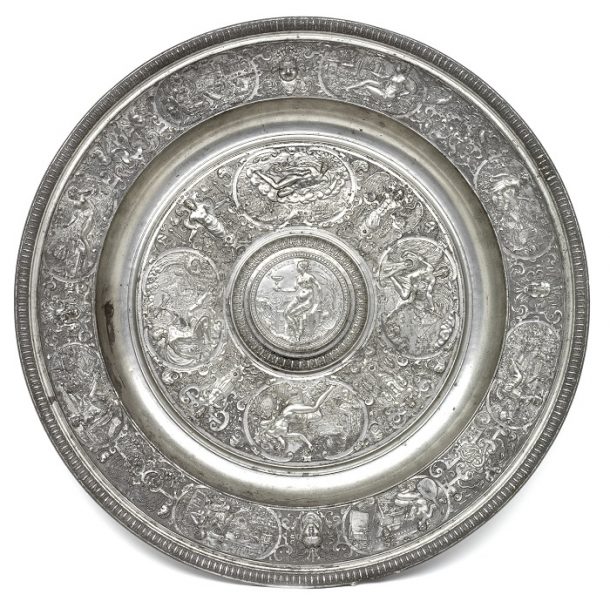
Even during his own lifetime, Briot’s prototype was imitated by other craftsmen. Bernard Palissy (ca.1510-ca.1590) cast a replica in earthenware in the 1580s. This, in turn, was replicated again in earthenware during the mid 19th century by Georg Pull (1810-1889).
Benjamin Schlick (1796-1872), working for Elkingtons, created his own version which was made into a table by the young designer, George Clark Stanton (1832-1894), and presented by Prince Albert to Queen Victoria for her birthday in 1850. During the same period, variations were made in cast iron, and, as late as 1900, the Parisian pewterer, Jules Brateau (1844-1923), was selling editions adapted for the art nouveau market.
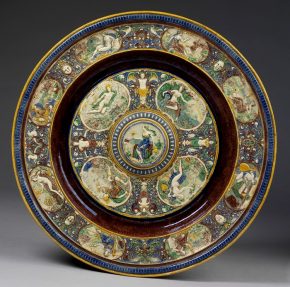
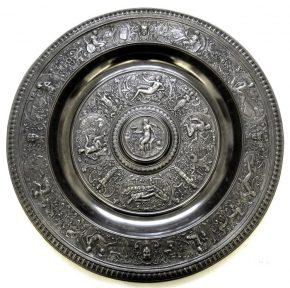
Although the Wimbledon Trophy is named after Venus, it is a figure of Temperance holding a wine cup that decorates the central boss. Around this, a broad band of ornament containing four plaques with figures represents air, water, earth, and fire. In oval panels on the rim are the Seven Liberal Arts and their patron Minerva: Grammar, Reason, Rhetoric, Music, Arithmetic, Geometry and Astrology. The most noticeable differences between the Enderlein versions and the Briot prototypes are in the figures, flowers and strapwork that decorate the gaps between the plaques. There are variations too from one Enderlein version to another as the panels of decoration were orientated differently in the moulds.
A number of 19th-century editions thus claim a connection to the Wimbledon trophy although only one is an exact replica. The mould in which the Venus Rosewater Basin was electroformed was made from a plaster cast sold to Elkingtons in around 1849, by the German archaeologist, Dr. Emil Braun (1809-56). It was taken from the Louvre’s Enderlein dish. The V&A’s electrotype made by Elkingtons in 1852 was moulded from the same plaster cast, 12 years before the creation of the trophy.
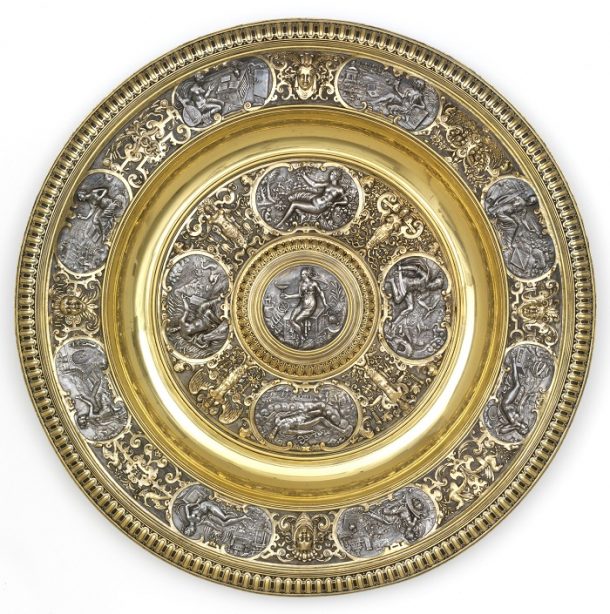
The Venus Rosewater Basin is a work of great artistry treated with awe by tennis stars and sports fans the world over for the achievement, continuity and drama it recognises. Its history makes it one of a kind. Each year the Wimbledon Ladies Singles Champion receives a smaller version of the basin to keep while the All England Club retains the presentation trophy. Such is the nature of replication, reproduction and appropriation in art, that she takes home a reduced reproduction of a trophy that is itself an electrotype copy formed in a mould taken from a plaster-cast of a 17th-century pewter basin, which was itself a modified version of a late 16th-century pewter basin. Martina Navratilova has 9 of them, Steffi Graf has 7 and if Serena wins on Saturday, she’ll have 6!
This blog is adapted from the chapter, A Unique Replica, written by Angus Patterson for the catalogue of the exhibition, Miraculous Silver: The V&A at Kunstkammer Würth, Schwäbisch Hall, Germany, 18 May 2015 to 6 January 2016. See exhibition details here.
For more information on the objects illustrated, click on the thumbnails below:
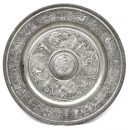
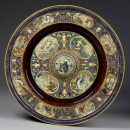
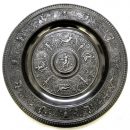
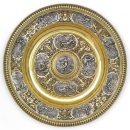



Some websites claim that the back of the Wimbledon Venus Rosewater dish or basin has the engraved names of the winners, but others that the back has a reverse of the front engravings. Wikipedia is silent on this. It would be nice to have accurate information about engraving of the winner’s name each year.
The plain surface around the inside of the bowl has the names of the winners engraved on it and this space is now full, so the names now go on the reverse of this section. One day there will be no more space left and so they will have to do what they have done with the men’s trophy which is add a plaque to a stand and engrave the names on that.
hi mate great story ……. I have one of the castiron ones that was a table I think as it has marks of were 3 legs one were …. it was sold to me as a germen parade shield once again great story
Hi. I have one of these in pewter that I inherited. Are there any markings I can look for that will help me learn of its origins? I do not know if there was a reason for this being a family possession.
Thank you.
to tell if you have a copy of the original one made by Caspar_enderlein, 1610 on the outer pictures around the 1 oclock mark there is a small piece of timber or wood the a CE on the end if you have the ce on the wood you have a copy from the original